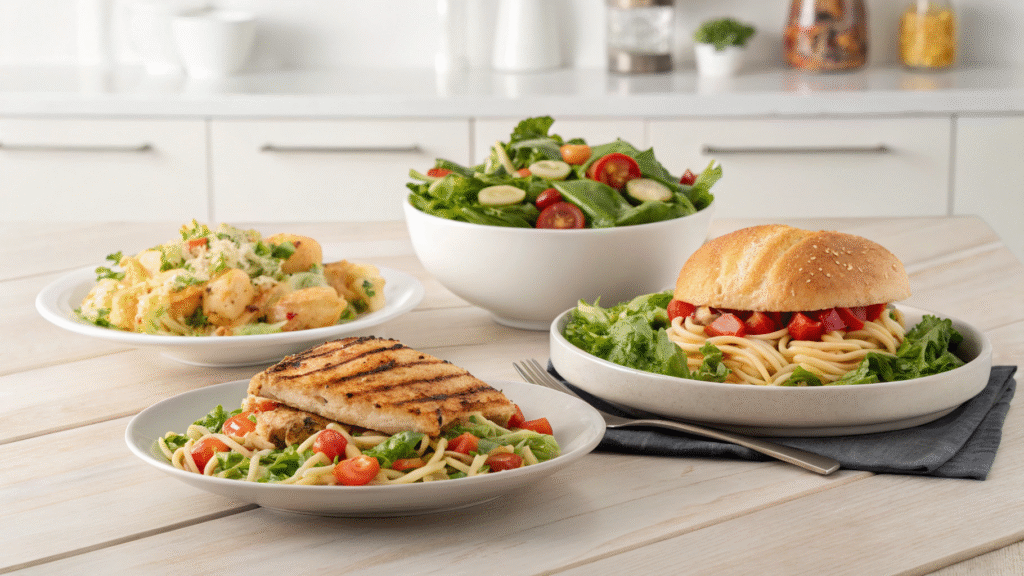Introduction
What separates a good cook from a great one? Surprisingly, it’s not always the ingredients or expensive gadgets. Often, it comes down to technique and insider knowledge that chefs pick up through years of experience — little secrets that make a big difference. These aren’t flashy tricks you see on cooking shows. They’re the quiet, behind-the-scenes moves that professionals rely on to turn everyday ingredients into amazing meals.
In this article, we pull back the kitchen curtain to reveal the secrets chefs don’t usually share. Whether you cook every day or just on weekends, these smart tips will help you cook better, faster, and with more confidence. Let’s dive into the wisdom of the pros.
1. Heat Your Pan Before Adding Oil
One of the simplest ways to improve your cooking instantly is to preheat your pan before adding oil. Why? Because oil breaks down at high temperatures, and adding it to a hot pan prevents sticking and preserves flavor.
Why It Matters:
- Promotes even cooking
- Creates a better sear
- Prevents food from absorbing too much oil
Chef Tip: Flick a few drops of water on the pan — if they dance and evaporate quickly, it’s ready.
2. Season Everything (Not Just at the End)
Chefs season in layers. That means salting meat before cooking, adding salt while sautéing onions, and tasting sauces as they develop. This builds complex, full-bodied flavor.
Why It Matters:
- Brings out natural flavors
- Reduces the need for heavy sauces
- Makes food taste “restaurant-quality”
Chef Tip: Use kosher or sea salt. It’s easier to control and less processed.
3. Butter + Oil = Better Browning
Chefs often mix butter with oil when pan-frying. Oil raises the smoke point, and butter adds flavor and rich color.
Why It Matters:
- Helps prevent burning
- Gives food a golden crust
- Balances flavor with texture
Chef Tip: Add a knob of butter at the end to create a glossy finish on meats and veggies.
4. Acid Is Your Secret Weapon
Most home cooks underuse acidic ingredients. A splash of lemon juice, a dash of vinegar, or even a spoon of yogurt can transform a dull dish.
Why It Matters:
- Balances richness
- Enhances natural flavors
- Brightens the overall taste
Chef Tip: Add acid at the end of cooking to sharpen flavor without overpowering it.
5. Rest Everything — Not Just Meat
Chefs let meat rest so juices redistribute, but the idea works with pasta, soups, and baked goods too. Letting food sit for a few minutes enhances flavor.
Why It Matters:
- Juicier texture
- Stronger, well-developed flavor
- Easier to plate and serve
Chef Tip: Soups and stews taste better the next day. Make ahead when possible.
6. Use the Right Cutting Board and Knife
Professional chefs are picky about their tools. A good chef’s knife and a stable cutting board make prep faster, safer, and more consistent.
Why It Matters:
- Reduces hand fatigue
- Speeds up prep work
- Improves precision and safety
Chef Tip: Use wood or plastic boards — glass and stone dull knives.
7. Don’t Fear High Heat (When It’s Appropriate)
A common mistake among home cooks is being afraid of high heat. But searing a steak, stir-frying vegetables, or caramelizing onions all benefit from it.
Why It Matters:
- Creates flavor through browning (the Maillard reaction)
- Keeps food from steaming
- Adds texture and complexity
Chef Tip: Use a cast-iron or stainless-steel pan for high-heat cooking.
8. Deglaze Your Pan Like a Pro
After cooking meat, don’t rinse the pan. Those brown bits (called fond) stuck to the bottom are full of flavor. Deglaze with wine, broth, or vinegar to create a sauce.
Why It Matters:
- Unlocks hidden flavor
- Makes instant pan sauces
- Adds depth to simple meals
Chef Tip: Use a wooden spoon to gently scrape while deglazing.
9. Use Your Freezer Like an Extra Pantry
Chefs are experts at reducing waste. Your freezer can preserve more than just leftovers — think herb butters, sauces, or even chopped aromatics.
Why It Matters:
- Saves time on busy nights
- Reduces food waste
- Keeps ingredients on hand
Chef Tip: Freeze wine in ice cube trays to use later in sauces and soups.
10. Garnish With Purpose
A final touch can elevate a dish from good to unforgettable. Garnishes aren’t just pretty; they add texture, contrast, or brightness.
Why It Matters:
- Enhances flavor and presentation
- Adds color, crunch, or aroma
- Shows attention to detail
Chef Tip: Use microgreens, citrus zest, or a drizzle of flavored oil.
Frequently Asked Questions (FAQ)
Q1: What’s the most common mistake home cooks make?
A: Not seasoning enough or at the right time. Always taste and adjust as you cook.
Q2: Are expensive knives necessary?
A: Not necessarily. One quality chef’s knife is better than a full cheap set. Keep it sharp and well cared for.
Q3: How do I make my food taste more like restaurant dishes?
A: Layer seasoning, use acid and fat correctly, and finish dishes with garnishes or fresh herbs.
Q4: What is one ingredient chefs use that home cooks often skip?
A: Anchovy paste or fish sauce — a little adds umami without a fishy taste.
Q5: How can I practice these tips without overwhelming myself?
A: Focus on one or two tips per week. Over time, they become second nature.
Conclusion
Chefs aren’t magicians — they’re problem-solvers who know how to use heat, seasoning, and technique to get the best out of simple ingredients. By applying even a few of these secrets, you can elevate your home cooking game and start creating meals that rival your favorite restaurants.
Whether it’s mastering the pan sear, building flavor through layering, or finishing dishes with finesse, these tips are powerful tools in the hands of any cook. Try them out, experiment, and don’t be afraid to trust your taste. Your next kitchen masterpiece might be just one secret away.


